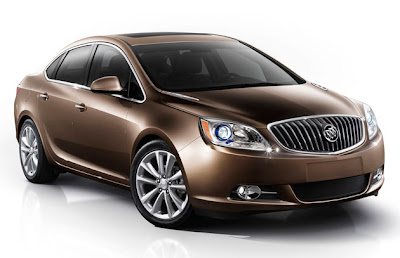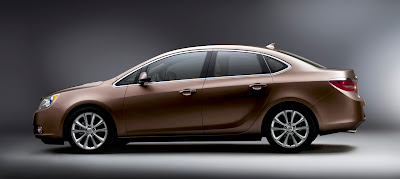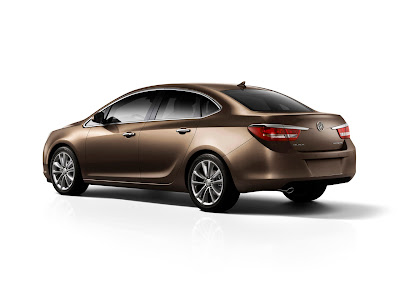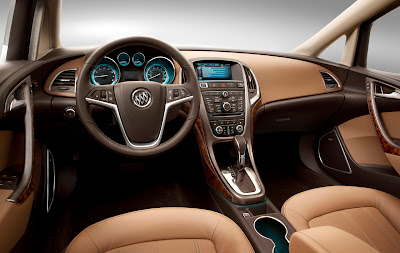2012 Buick Verano Review and Pictures
Since the Verano is based off of the Delta II platform (which is relatively large for what General Motors calls a "compact sedan") that also underpins the Chevrolet Cruze, the new Buick's dimensions are awfully close to that of the larger, Epsilon II-based Regal. What's important to note, however, is that while the Verano is Cruze-based, it uses different materials throughout the interior and has a totally different look. GM is convinced there's a market for an entry-level Buick sedan, and the automaker will be showing off its latest creation at the 2011 Detroit Auto Show next week.
At 181-inches long, the Verano may be just over nine inches shorter than the Regal, but it's only about two inches narrower and less than half an inch shorter in height. Buick's design language carries over nicely to the new small sedan, with the front fascia also looking a bit more like the larger LaCrosse sedan. The upward sloping lower character line on the sides are very similar to what we're used to on the Regal, but perhaps the most interesting design cue are the taillamps. We like the angry-looking downward slope to the taillamp design, but even after seeing this car in person at a GM backgrounder, we remain unsure if the chrome eyebrows are a tasteful addition. Stare at an image of the Verano's rump for a few moments, imagine it without the silvery garnishes, and things still look mighty fine to us. The car rides on a set of 17-inch alloy wheels, though larger 18-inch alloys are available on higher-level trims.
Like the Regal, the Verano is only available with front-wheel drive. And also like the Regal, a 2.4-liter four-cylinder engine with direct injection lurks underhood and produces 177 horsepower and 170 pound-feet of torque. The Cruze, meanwhile, uses different engines altogether – either a normally aspirated 1.8-liter or a 1.4-liter turbocharged four-cylinder.
Interestingly, the Ventiports on the Verano's hood are false advertising, with six holes to suggest there's a six-cylinder engine underhood. Either way, Buick says the larger four-cylinder is estimated to achieve 22 miles per gallon in the city and 31 mpg on the highway. To sweeten the pot, Buick also says that a turbocharged 2.0-liter four will be available after the Verano's initial launch, and while we don't have any details on this engine, we'll bet our bottom dollar that it's exactly the same one that's used in the Regal.
Interestingly, the Ventiports on the Verano's hood are false advertising, with six holes to suggest there's a six-cylinder engine underhood. Either way, Buick says the larger four-cylinder is estimated to achieve 22 miles per gallon in the city and 31 mpg on the highway. To sweeten the pot, Buick also says that a turbocharged 2.0-liter four will be available after the Verano's initial launch, and while we don't have any details on this engine, we'll bet our bottom dollar that it's exactly the same one that's used in the Regal.
Inside, the interior is exactly what you'd expect of a car that is essentially the lovechild of a Cruze and Regal, with Buick-spec materials and fit-and-finish carried down into a smaller package. Even so, the Verano's cabin is only about two cubic feet less capacious than the larger Regal, and we already know that the Cruze is still plenty comfortable for four full-size adults. In addition to standard OnStar, the Verano will be available with features like push button start, dual-zone climate control, a heated steering wheel and heated leather seats.
Official pricing will surely be announced closer to the car's on-sale date near the end of 2011. If early reports are to be believed, however, expect the Verano to be priced around $21,000 for base models, going as high as $26,000 for cars with all of the trimmings. We'll have more information live from the Detroit Auto Shownext week, but in the meantime, check out our high-res gallery and official press release after the break.
2012 Buick Verano Review and Pictures
This entry was posted on at 1:50 PM and is filed under Buick, New Cars, Reviews. You can follow any responses to this entry through the RSS 2.0. You can











